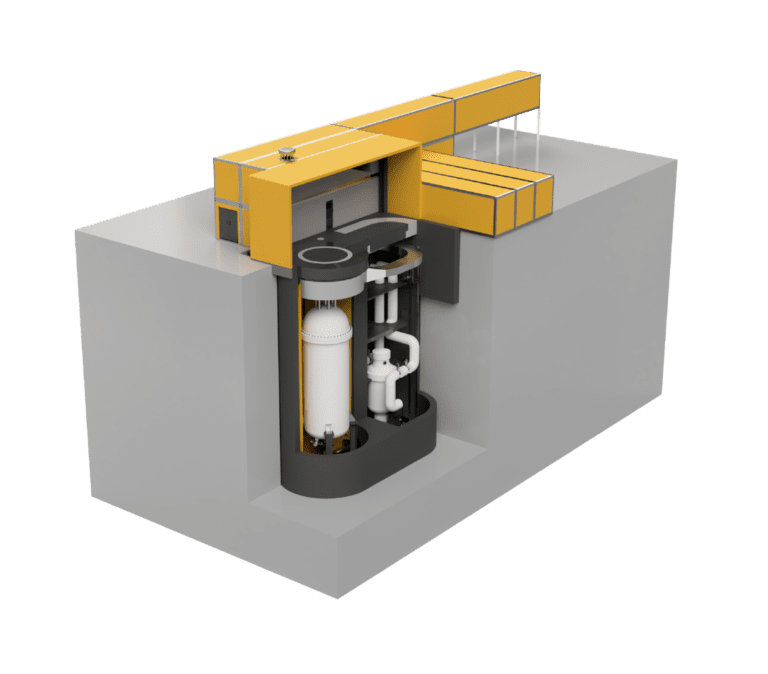How Clean is Clean? Blasting Out Frozen Soil
The final disposition of the soil was to spread it out on the ground and cover it with asphalt, turning the expensively gathered Anarctic soil into a parking lot that continues to serve the sailors at Port Hueneme, California.
After the decision was made to decommission the PM-3A, the Naval Nuclear Power Unit began planning to remove the equipment and clean up the site. For a remote site like Antarctica, one might think that the logical method of decommissioning would be to remove the fuel and lock the containment doors, but this option could not even be considered. The Antarctic Treaty, signed in December 1959, specifically forbids the use of Antarctica as a site for testing nuclear weapons or for disposing of nuclear waste.
Antarctica is a desolate place, with a very short period each year that allows humans to work out of doors. Because of these limitations, the planned decommissioning was scheduled to require three years, with time set aside during the austral winter to plan the next season’s tasks.
Plant Removal and Clean-up
The vast majority of the radioactive isotopes associated with operating the PM-3A were located either in the core itself or in the pressure vessel, which had been exposed to an intense neutron flux over a period of nearly ten years.
An inventory of the estimated activity levels of the various components showed that the pressure vessel contained approximately 40,000 curies, while the rest of the plant totaled approximately 5 curies.
However, the Naval Facilities Engineering Command’s interpretation of the Antarctic Treaty led them to plan for the complete removal of the plant, including the buildings and any soil that might be contaminated.
Soil Contamination
In the 1950s, when PM-3A was designed, it was quite common for reactor plant coolant to be diluted down to legally acceptable concentrations of radioactive material and then discharged into an available body of water or retention area. During the period when PM-3A was operating, the discharge limits became significantly more stringent, requiring the addition of a treatment plant to further reduce discharge concentrations. There were thus two retention areas, one used before the treatment system was installed, and a larger, less contaminated one used after it was installed.
Even though the plant had never discharged any effluent that was above legally accepted limits, the soil in the retention areas had elevated levels of radioactive material because the soil had acted as an ion exchange filter.
Contaminated soil in the retention area needed to be removed to comply with the existing interpretation of the Antarctic Treaty, but there was no definition in US regulations for contaminated soil. The closest rule that could be found was a limit of 2000 picocuries per gram Cs-137 or equivalent, which was the limit at which solid material was considered radioactive for purposes of transportation regulations.
This level did not seem conservative enough for the planners of the operation, so they decided that the action level should be 10 picocuries per gram, which is at the lower end of the detectable range. It is not measurably different from the concentration of cesium found all over the world as a result of atmospheric nuclear weapons testing.
The basis for choosing 10 picocuries per gram was a regulation written by the USSR, the only International Atomic Energy Agency member to have a regulation specifically dealing with contamination levels for soils. (All other members had regulations for contamination levels in water or in air, which often enter the human body, but not for soil. Typically, people do not eat dirt; they also do not normally eat food grown in Antarctic soil.)
However, the USSR regulation did not state that the maximum permissible concentration in soil should be 10 picocuries per gram. Instead, the regulation governing soils stated that they would be considered contaminated if they contain an activity level at least 10 times the maximum permissible concentration in open water with one gram of soil being equivalent to one milliliter of water.
Instead of calculating the soil contamination limit using Soviet maximum permissible concentrations in open water, American decision makers applied the Soviet conversion rules to the much more stringent US maximum permissible concentrations, coming up with a number that seemed conservative enough to prove that they were doing all they could to comply with the strictest interpretation possible of the international treaty.
Soil Removal
As might be expected when trying to clean dirt to a contamination level very close to or equal to dirt all over the world, the soil removal operation became a complex, time consuming chore. It was made more difficult by the fact that this particular dirt was frozen solid and required blasting to loosen it.
For nearly six years, the soil removal effort continued, with independent consultants finding more and more dirt “contaminated” to levels above the conservatively assigned maximum permissible value. It appeared likely that the removal effort would become a career for some of those involved.
Finally, people stepped back far enough from the operation to wonder just what was being accomplished by sending people into a harsh climate with dynamite and pick axes to remove soil with no demonstrated potential to cause harm to people or indigenous species. Detailed analysis was conducted that proved that the maximum radiation dose from man-made radiation received by an individual would be less than 15 millirem per year with a more probable value of 6 millirem per year. The decommissioning effort was declared complete in February, 1979.
More than 14,000 metric tons of soil was bulk packed on board ships (less than 200 tons of which was considered radioactive for transportation purposes) and sent to Port Hueneme, California. The final disposition of the soil was to spread it on the ground and cover it with asphalt, turning the expensively gathered Antarctic soil into a parking lot that continues to serve the sailors on the base.


